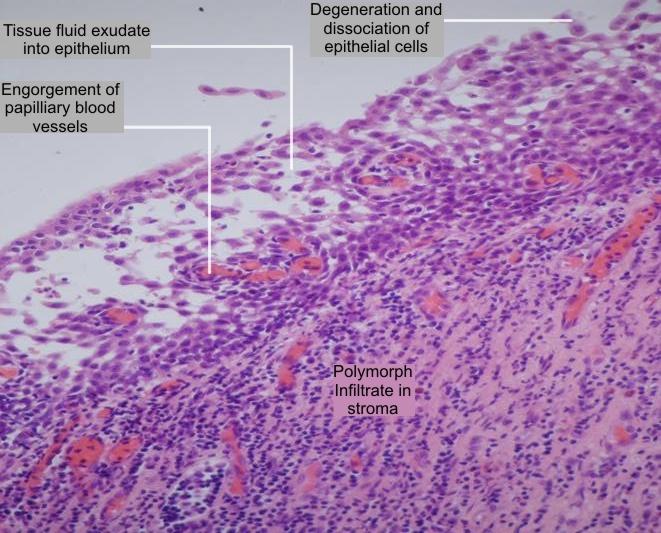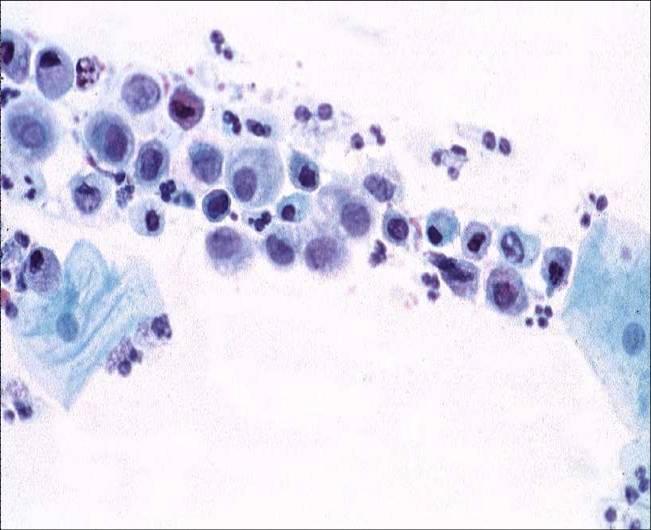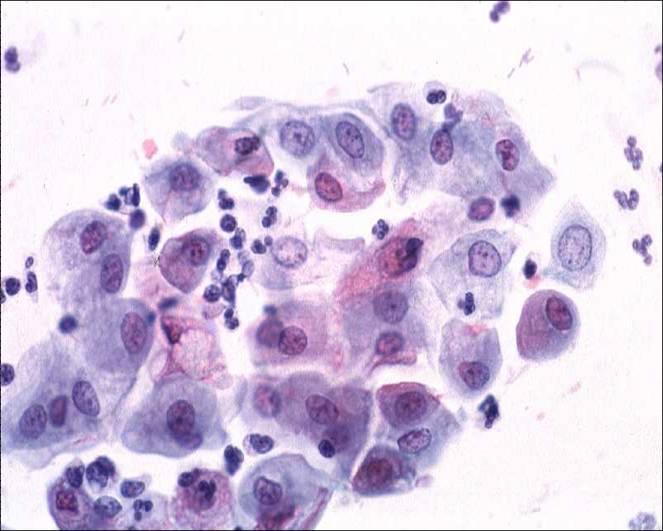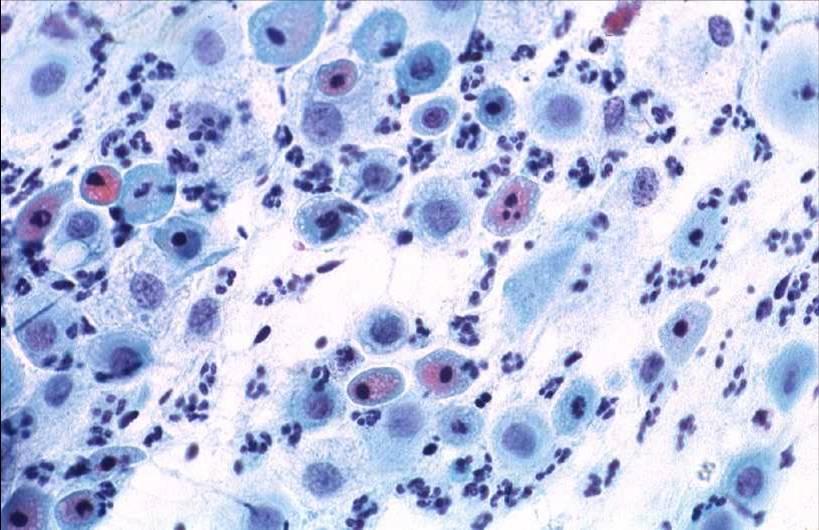This content is also available in:
Italiano
Español
Čeština
Magyar
Polski
Inflammatory changes in the cervix

Cytology of acute non specific cervicitis
The characteristic features of the smear are:
- Epithelial cells which show marked degenerative changes of the cytoplasm and nucleus. The cytoplasm appears frayed or vacuolated and may exhibit polychromatic staining. It may shrink slightly to produce a perinuclear halo. Occasionally polymorphs are engulfed in the cytoplasm. The nuclear changes vary with the severity of the injury. In the earliest stage they show coagulative necrosis with clumping of the chromatin, apparent hyperchromasia and irregularity of the nuclear membrane. When complete cell lysis supervenes the nuclei become swollen and hypochromatic and the nuclear structure and membrane become indistinct. Eventually the nucleus shrinks and become pyknotic and karyorrhexis supervenes
- Numerous polymorphs embedded in a protein rich exudate. Occasionally the polymorphs are so numerous that they obscure the epithelial cells in the smear and render the smear inadequate for evaluation.
- Red blood cells, chains of coccoid bacteria or bacilli, mucin and necrotic cell debris may also be seen in the background.


Cytology of atrophic cervicitis


